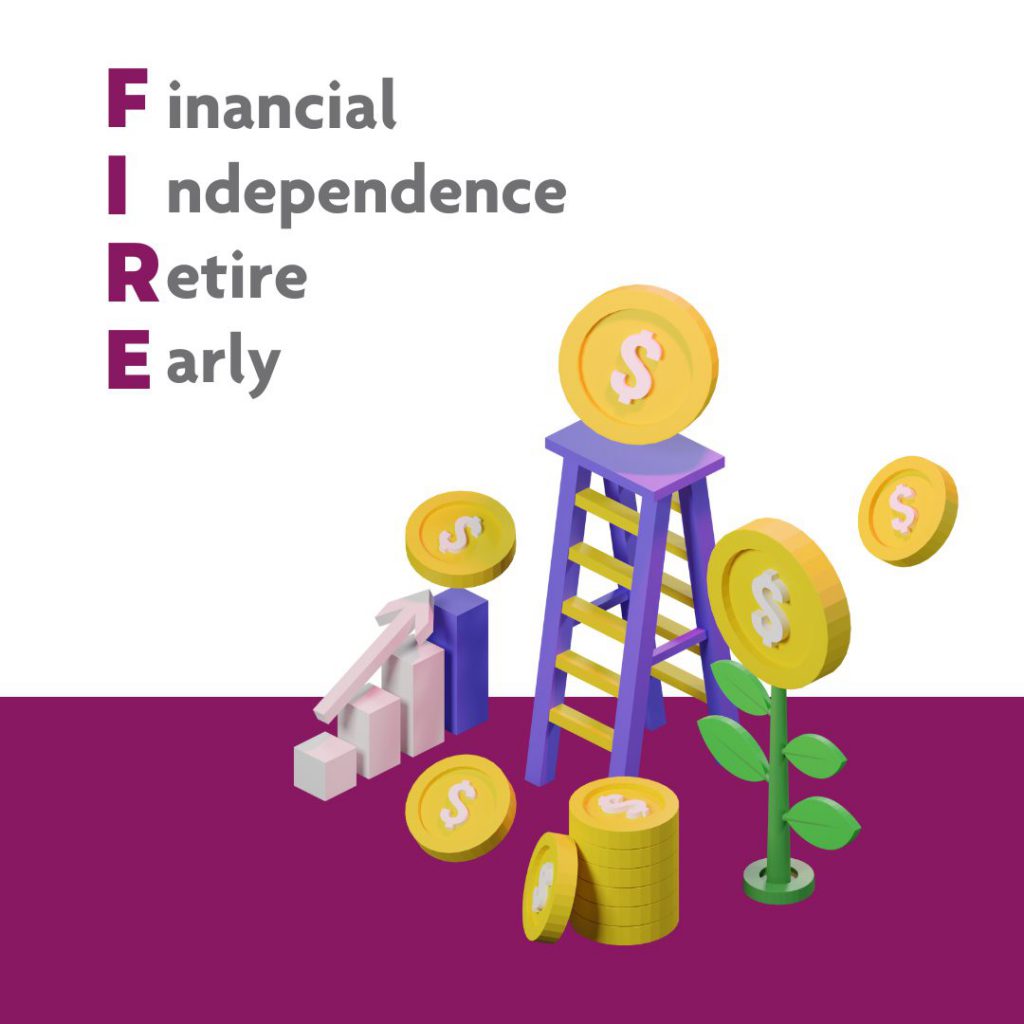Imagine having the freedom to do whatever you want in your 30s, and we mean whatever you want. Want to go on a holiday on a Wednesday? Go ahead! Want to stay up late with the children and not worry about clocking in at 8am the next day? Go ahead!
This is what FIRE offers to those who are willing to work for it. To be financially secure at a younger age (with some sacrifices of course!) in exchange for the freedom to do what you want with your time without having to rely on a paycheck.
What is FIRE?
FIRE stands for Financial Independence, Retire Early.
The FIRE movement promotes the notion that you can attain financial independence and take advantage of early retirement if you diligently save and invest a significant portion of your income.
Think about it this way, people commonly retire when they reach their 60s. On the other hand, FIRE offers you the opportunity to retire much earlier, living off your savings and investment alone for the rest of your life.
The objective of FIRE is not about having the ability to chill every day, but to become financially independent so that you can decide how to spend your free time.
Working part-time, not working at all, or accepting a pay reduction to pursue your passion project are all examples of having financial freedom.
How does FIRE work?
The FIRE movement places a strong emphasis on achieving financial independence and leading the life you want as early in life as you can. To do this, the FIRE movement advocates reducing spending while looking for methods to boost income, whether through investing or launching new businesses that bring in passive income.
The FIRE movement’s cornerstones are aggressive saving and investing.
Typically, people who are trying to accomplish FIRE save about 50% of their income. However, depending on how soon you want to retire and how much you need in retirement, you may need to save more than 50% of your income.
The consensus of the FIRE movement is this:
- FIRE movement supporters frequently save 50% or more of their monthly income.
- To assist them to maximize their savings rate, many FIRE enthusiasts lead frugal lifestyles.
- Low-cost index funds are a popular investment choice among FIRE movement supporters. Others invest in property that generate consistent cash flow.
So how much money do you need to FIRE?
So, how much money do you need to achieve FIRE? There are two ways you can calculate your FIRE amount: you can use – the 4% rule or the x25 rule.
4% Rule
A classic guideline in retirement planning is the 4% rule, which ensures that you have sufficient money to pay for your living expenses for the rest of your life.
It claims that you won’t have to worry about depleting your retirement fund for at least 30 years if you comfortably withdraw 4% of fund in the first year of retirement and increase that amount for inflation each year after that.
Say you need $48,000 a year to pay for your living expenses. In order to retire right now and live the next 30 years of your life on your fund, you’ll need at least $1.2 million in savings ($48,000 divide 4%).
X25 Rule
According to the rule of 25, you must save up at least 25 times your yearly expenses in order to retire.
First, think about how much you spend monthly. Got that number? Now, multiply that by 12 and you have your annual expenses. To achieve the amount for FIRE, you now multiply your annual expenses by 25.
For example, if your annual expenses are $48,000 to achieve FIRE, you will need $1,200,000. That is your end goal amount.
The table below shows how much money you’ll likely need to FIRE based on your annual expenses:
Annual Expenses |
Expected FIRE Amount |
|
$30,000 |
$750,000 |
|
$70,000 |
$1,750,000 |
|
$100,000 |
$2,500,000 |
As you can see from the table, the lower your living expenses, the less money you’ll need to FIRE. This is the precise reason why simplicity and thrifty living are so popular among those who advocate for the FIRE movement.
Types Of FIRE
Most of us typically may not be able to save enough money to completely stop working and still be able to fund our lifestyle until we are old. But that does not mean that we still cannot achieve some level of financial independence. And there are different variations of FIRE that you can adopt depending on how much you can save and how much financial freedom you will be comfortable with. These include:
1. Barista FIRE
Barista FIRE participants do not necessarily want to quit their jobs – instead, they want to save enough money so that they only need to work either part-time or whenever they want to.
Barista FIRE investors achieve this by saving enough money to support their lifestyles without having to work at a high stress job that may pay a lot more money. Some people are drawn to Barista FIRE because it allows them to concentrate on work that is important to them.
2. Lean FIRE
Lean FIRE refers to a willingness to maintain a modest or economical way of life even after retiring. If being able to retire early means cutting expenses, you are willing to do so.
A Lean FIRE advocate tends to be someone who can survive on very little and who adheres to a modest or frugal lifestyle. To get there more quickly, they can set aside more than 50% of their income.
3. Fat FIRE
Now, this is a direct contrast to Lean FIRE.
A significant post-retirement plan with assets that can provide strong returns and passive income will be the key to the retirement plan of someone who wants to live the Fat FIRE life.
Think of a high retirement budget because you want to live lavishly and comfortably upon retirement.
4. Coast FIRE
This category refers to having enough savings to flow into traditional retirement in your 60s. In other words, you might completely cease saving and still take advantage of a traditional retirement.
Share what you've learned
You may also enjoy

What to Do With Your Annual Bonus

ESG vs SRI Investing



